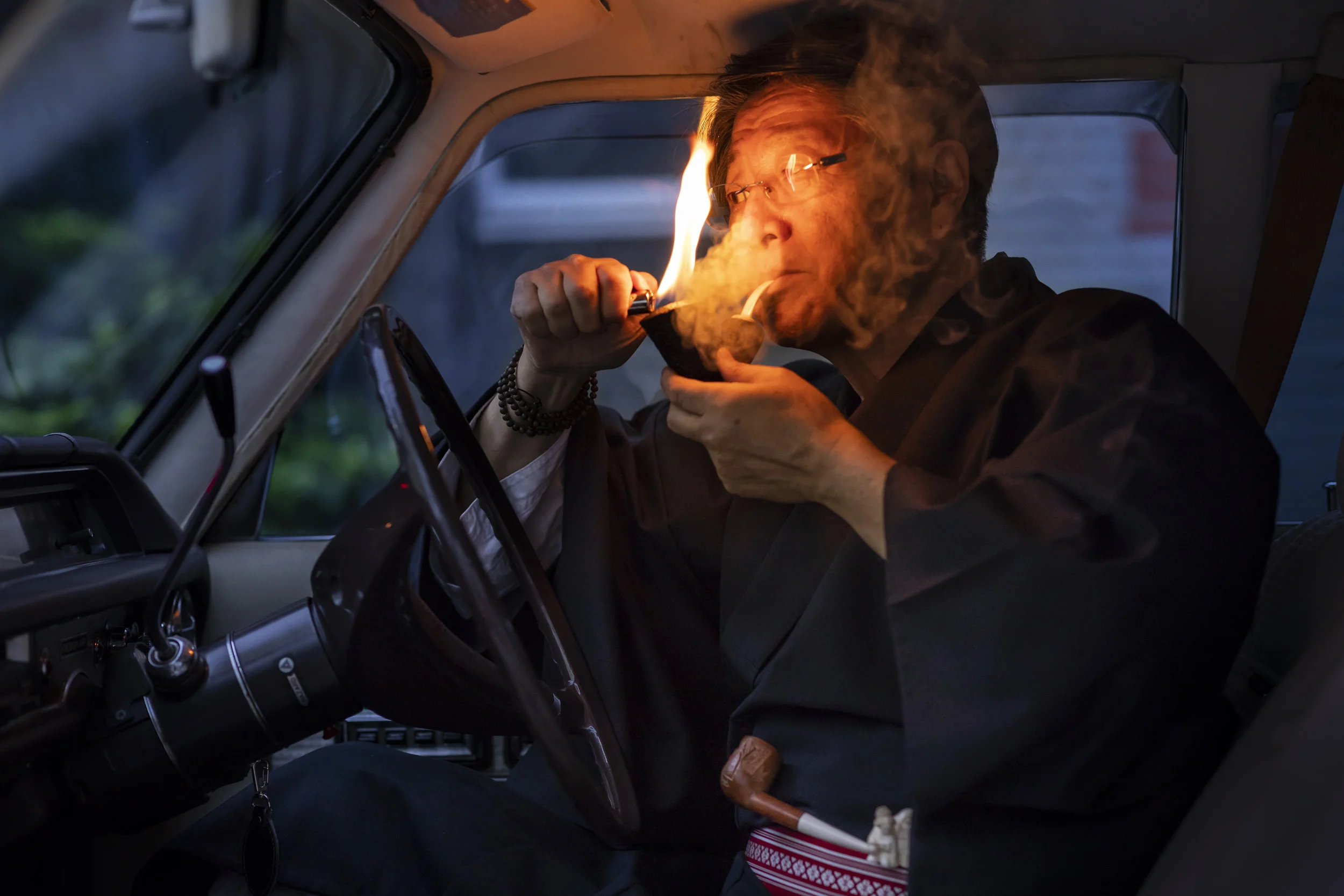
Tokyo, Japan, 13 April 2018: Mr. Kyozaburo Tsuge is the head of a famous Japanese Pipe and Tobacco business. He is also an outspoken advocate for the Japanese Ivory Association and for the cultural heritage of Ivory carving in Japan. At the end of the second world war, smoking pipes modelled after General MacArthur’s famous pipe were especially popular amongst American GI’s. Tsuge stopped making ivory pipes 42 years ago. At the height of the Japanese Ivory trade, there were over 500 families involved, nowadays there are 30, mainly focused on the Hanko business. (Photo by Brent Stirton/Verbatim by Getty Images.)

Tokyo, Japan, images of a private ivory Netsuke collection. Many of these exquisitely carved pieces are defined as a carved miniature ornament, especially of ivory or wood, formerly worn in Japan to suspend articles from the sash of a kimono. The idea is that they be used subtly on a garment, sometime to hold a key bag but mainly to ornament something on the clothing or something worn in the belt tying the Kimono. Subtle games are played in Japanese society with the theme of these tiny ornaments. (Photo by Brent Stirton/Verbatim by Getty Images.)
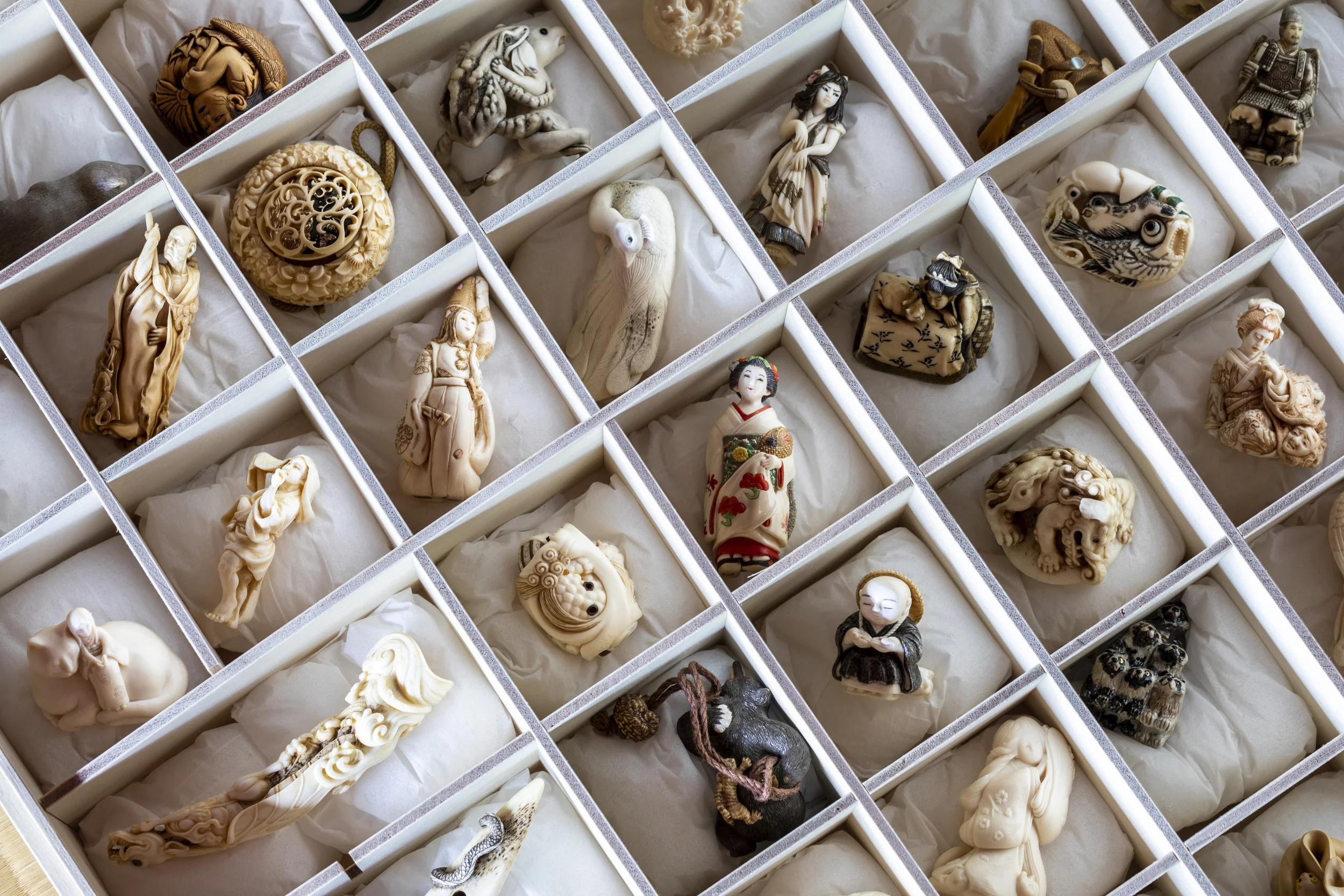
KYOTO, JAPAN, APRIL 2018: Moderen Ivory Netsuke carvings from The Netsuke Art Museum. (Photo by Brent Stirton/Verbatim by Getty Images.)

MANYANI, TSAVO, KENYA, JULY 2011: The preparation for the burning of 5 tons of trafficked Ivory recovered from a seizure in Singapore in 2002, Manyani, Tsavo, Kenya, 20 July 2011. The ivory to be burnt is originally from Malawi and Zambia, 5 tons of the original 6.4 tons were burnt and the remainder will supposedly be sent back to the 2 countries of origin, Malawi and Zambia. It will be burnt in Kenya under the auspices of the LATF, the Lusaka Task Force, a group of affiliated countries who are supposed to form a common front against wildlife crime in Africa. The ivory burning is regarded with some cynicism from conservation quarters, no Kenyan ivory was added to the pyre, despite stocks in excess of 65 tons and their appropriation of the PR value of this event. The Kenyans response is to say that the disposal of public assets is a parlimentary affair, with due process of the law. The minimum time it would take for this is 3 months, more than enough time for Kenya to have participated if it so chose. Wildlife crime in Kenya still remains a perceived minor crime, with a maximum fine of only $430 for the killing of an elephant for its tusks. In conservation circles this illustrates a lack of comittment on the part of the KWS to truly stamp out the illegal ivory trade within Kenya. The overwhelming perception is that KWS appropriated this event, with minimum participation from the other LATF countries, and no credit was given to the Environmental Impact Agency despite the fact that it was their intelligence operation which resulted in the seizure in the first place. KWS also attempted to charge all foreign media a fee of $700 to attend the burn, despite them being invited guests to the burning and an indispensable source of publicity for Kenya's supposed anti-ivory trade stance. (Photo by Brent Stirton/Reportage for National Geographic.)

Tokyo, Japan, April 2018: A Oneisan practices with her Shamisen at the Asakusa Kenban where Geisha shows are held for clients. The bridge of the Shamisen is made of ivory and the plectrum , known as a Bachi, is also made of ivory and is said to create the best sound. The skin on the front of her Shamisen is made of cat skin and the skin at the back is made of dog skin. The instrument itself was made 15 years ago. The shamisen is a plucked stringed instrument. Its construction follows a model similar to that of a guitar or a banjo, with a neck and strings stretched across a resonating body. The neck of the shamisen is fretless and slimmer than that of a guitar or banjo. The body resembles a drum, having a hollow body that is covered front and back with skin, in the manner of a banjo. The skin used depends on the genre of music and the skill of the player. Traditionally skins were made using dog or cat skin but use of these skins gradually fell out of favor starting around 2006 due to social stigma and the decline of workers skilled in preparing these particular skins. The bachi or plectrum used to play the shamisen also differ in size, shape, and material from genre to genre. The bachi used for nagauta shamisen are made out of three possible materials, i.e. wood, plastic, or ivory. Ivory is the preferred substance and Shamisen players often believe it delivers the best sound. (Photo by Brent Stirton/Verbatim by Getty Images.)
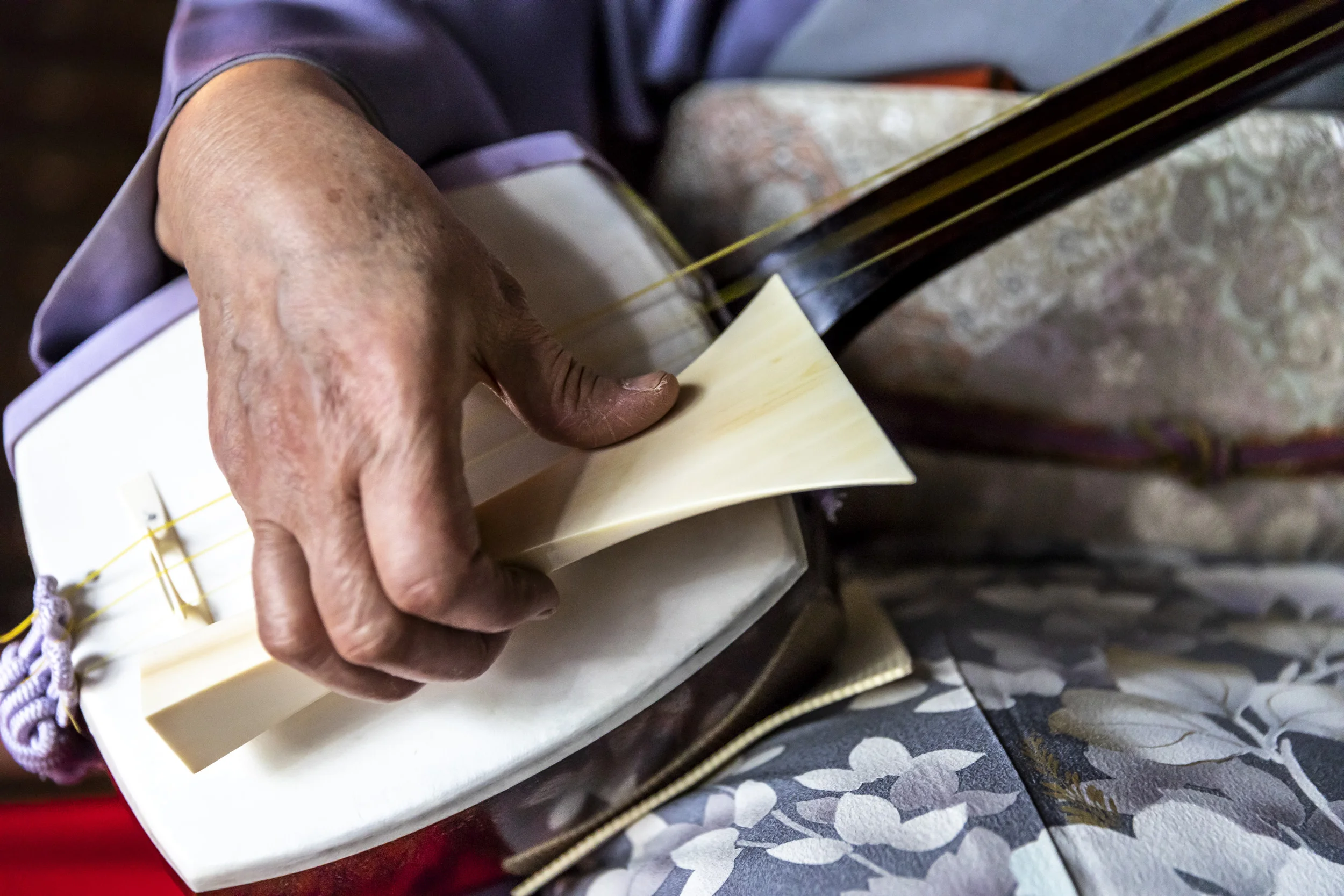
Tokyo, Japan, April 2018: A Oneisan practices with her Shamisen at the Asakusa Kenban where Geisha shows are held for clients. The bridge of the Shamisen is made of ivory and the plectrum , known as a Bachi, is also made of ivory and is said to create the best sound. The skin on the front of her Shamisen is made of cat skin and the skin at the back is made of dog skin. The instrument itself was made 15 years ago. The shamisen is a plucked stringed instrument. Its construction follows a model similar to that of a guitar or a banjo, with a neck and strings stretched across a resonating body. The neck of the shamisen is fretless and slimmer than that of a guitar or banjo. The body resembles a drum, having a hollow body that is covered front and back with skin, in the manner of a banjo. The skin used depends on the genre of music and the skill of the player. Traditionally skins were made using dog or cat skin but use of these skins gradually fell out of favor starting around 2006 due to social stigma and the decline of workers skilled in preparing these particular skins. The bachi or plectrum used to play the shamisen also differ in size, shape, and material from genre to genre. The bachi used for nagauta shamisen are made out of three possible materials, i.e. wood, plastic, or ivory. Ivory is the preferred substance and Shamisen players often believe it delivers the best sound. (Photo by Brent Stirton/Verbatim by Getty Images.)

Tokyo, Japan, April 2018: A Oneisan practices with her Shamisen at the Asakusa Kenban where Geisha shows are held for clients. The bridge of the Shamisen is made of ivory and the plectrum , known as a Bachi, is also made of ivory and is said to create the best sound. The skin on the front of her Shamisen is made of cat skin and the skin at the back is made of dog skin. The instrument itself was made 15 years ago. The shamisen is a plucked stringed instrument. Its construction follows a model similar to that of a guitar or a banjo, with a neck and strings stretched across a resonating body. The neck of the shamisen is fretless and slimmer than that of a guitar or banjo. The body resembles a drum, having a hollow body that is covered front and back with skin, in the manner of a banjo. The skin used depends on the genre of music and the skill of the player. Traditionally skins were made using dog or cat skin but use of these skins gradually fell out of favor starting around 2006 due to social stigma and the decline of workers skilled in preparing these particular skins. The bachi or plectrum used to play the shamisen also differ in size, shape, and material from genre to genre. The bachi used for nagauta shamisen are made out of three possible materials, i.e. wood, plastic, or ivory. Ivory is the preferred substance and Shamisen players often believe it delivers the best sound. (Photo by Brent Stirton/Verbatim by Getty Images.)

Tokyo, Japan, April 2018: A Oneisan practices with her Shamisen at the Asakusa Kenban where Geisha shows are held for clients. The bridge of the Shamisen is made of ivory and the plectrum , known as a Bachi, is also made of ivory and is said to create the best sound. The skin on the front of her Shamisen is made of cat skin and the skin at the back is made of dog skin. The instrument itself was made 15 years ago. The shamisen is a plucked stringed instrument. Its construction follows a model similar to that of a guitar or a banjo, with a neck and strings stretched across a resonating body. The neck of the shamisen is fretless and slimmer than that of a guitar or banjo. The body resembles a drum, having a hollow body that is covered front and back with skin, in the manner of a banjo. The skin used depends on the genre of music and the skill of the player. Traditionally skins were made using dog or cat skin but use of these skins gradually fell out of favor starting around 2006 due to social stigma and the decline of workers skilled in preparing these particular skins. The bachi or plectrum used to play the shamisen also differ in size, shape, and material from genre to genre. The bachi used for nagauta shamisen are made out of three possible materials, i.e. wood, plastic, or ivory. Ivory is the preferred substance and Shamisen players often believe it delivers the best sound. (Photo by Brent Stirton/Verbatim by Getty Images.)
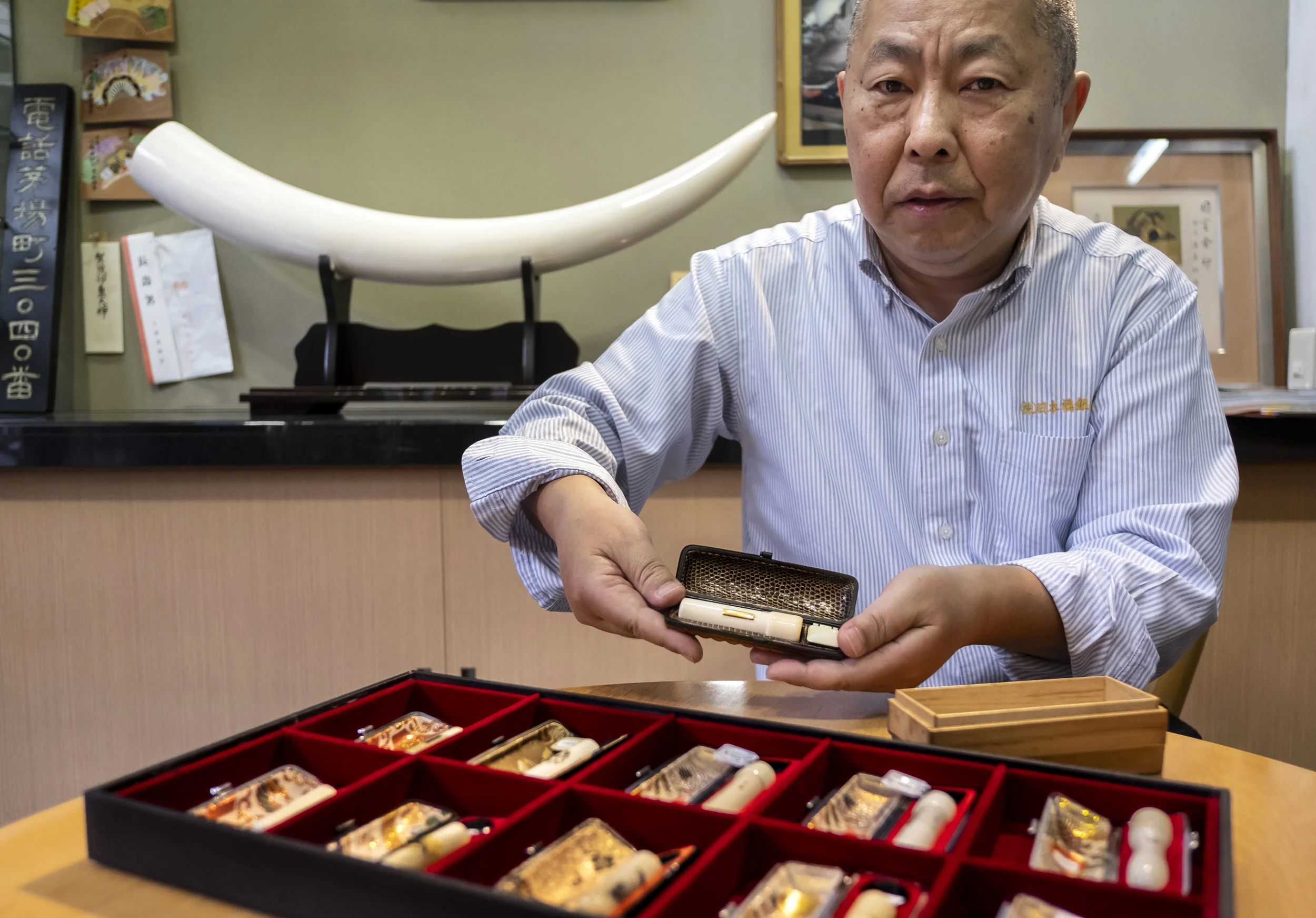
Tokyo, Japan, April 27 2018: Photographs from a visit to a specialized Hanko shop “Ginnando “at Kodemmacho, Nihonbashi area of Tokyo. At this store the most expensive ivory hanko with gold we saw came in a lizard and crocodile case. This is called ZOUGAN (inlay) hanko made by MINSEI, the very famous representative Japanese craftsman. It was 378000yen because his name was on it. On the issues of a foreigner buying an ivory Hanko, this is what the owner of the shop had to say. “ I don’t know if you can come home taking ivory or not but our products are all registered so I think it no problem.” “ I don’t know if you can take ivory outside of Japan. Ivory is listed 1 of CITES but all of our products are certified with seals. I think it OK. ( He seems to want to sell it while he was puzzled.)” “Speaking officially registered hanko ( Jitsuin 実印 )is ivory for Japanese. *That is why demand for ivory is still quite large. But foreigner dislike ivory because ivory is regulated by CITES. The foreigners have feeling animal welfare after all.” He said he has a big company client named ITOCHU, one of the biggest trading company in Japan. Every year department or division of the company make new hanko made of other materials but regarding officially registered hanko made of ivory are not made new. Ivory official hanko can be re carved. He scrapes old name off and carves new person’s name on ivory. Ivory can be reused. This is advantage of ivory he said. I doubt demand for ivory is still large. In response of me saying that is ‘Ivory products are made from dead elephants’, he agreed ‘ Yes. They are from dead elephants.’ When carving, no other material is beautiful than ivory. In answering my request “Would you confirm if I can take it outside of Japan?” he said “Confirm? I wonder where to check? You must know where to check. How to confirm?? OK I will check. I’ve never had such a client before. But this is only hanko. You don’t carry orn

Japan, 14 April, 2018: Kaiko, 62, a Japanese woman, is seen with three ivory Hankos she has purchased in the last ten years. She bought the first one from a door to door salesman and that is unregistered ivory. The other two she bought more recently for her son for an upcoming auspicious occasion. These were accompanied by a registration certificate stating the ivory came from a legal source. Kaiko bought her hanko because her parents died and she felt she needed a special personal seal for the property changes. Many Japanese have a strong belief in the use of a special Hanko for good fortune. Kaiko says, “One Hanko can change a persons life. My parents always told me, don’t use your Hanko very often, it decides your fate.” Kaiko paid 30, 000 Yen for her Hanko, but paid 300, 000 Yen for her sons. Prices have risen steadily making the ivory Hanko market strong in Japan. “When I die, I hope my children will place my Hanko in my coffin with me.” (Photo by Brent Stirton/Verbatim by Getty Images.)
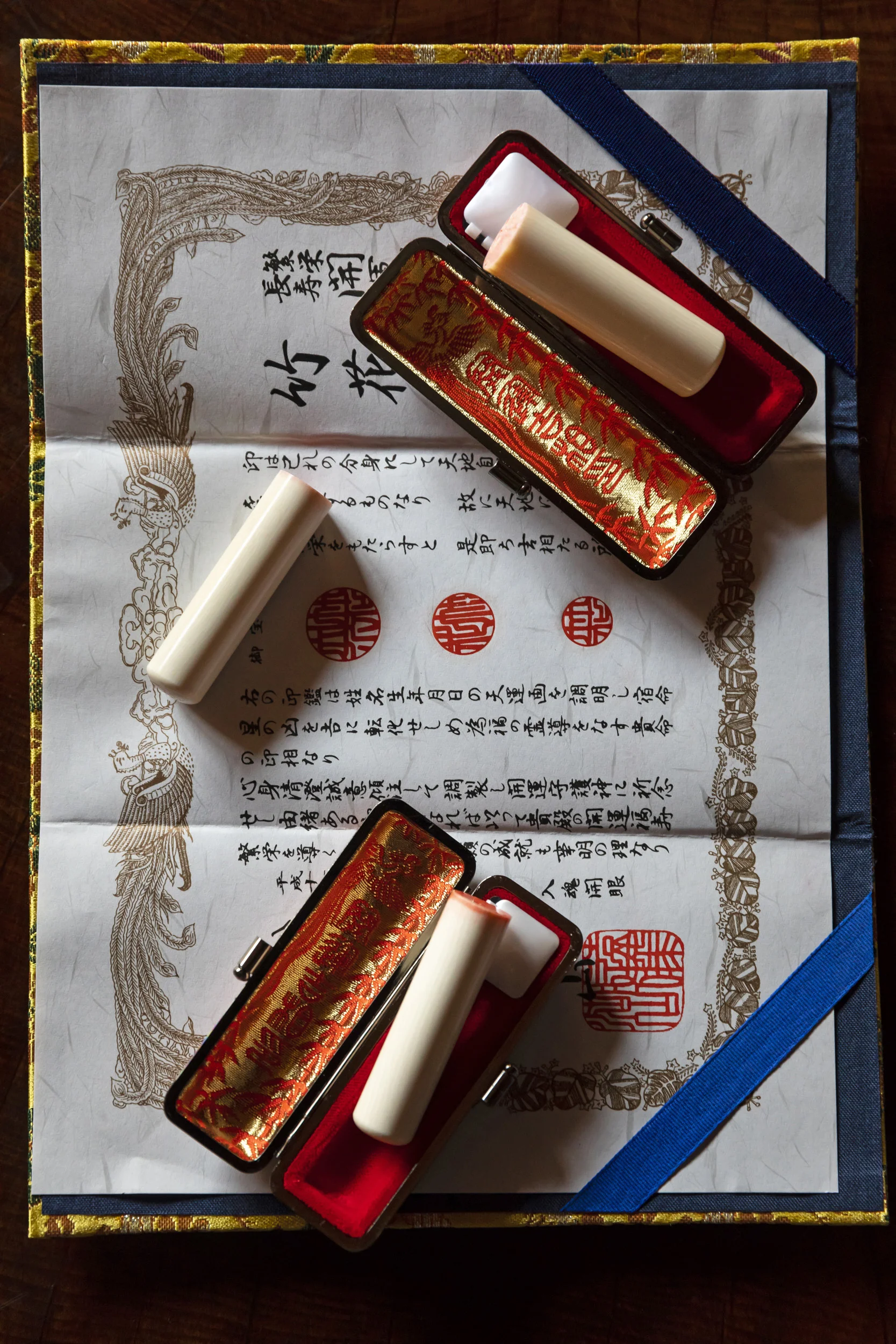
Japan, 14 April, 2018: Kaiko, 62, a Japanese woman, is seen with three ivory Hankos she has purchased in the last ten years. She bought the first one from a door to door salesman and that is unregistered ivory. The other two she bought more recently for her son for an upcoming auspicious occasion. These were accompanied by a registration certificate stating the ivory came from a legal source. Kaiko bought her hanko because her parents died and she felt she needed a special personal seal for the property changes. Many Japanese have a strong belief in the use of a special Hanko for good fortune. Kaiko says, “One Hanko can change a persons life. My parents always told me, don’t use your Hanko very often, it decides your fate.” Kaiko paid 30, 000 Yen for her Hanko, but paid 300, 000 Yen for her sons. Prices have risen steadily making the ivory Hanko market strong in Japan. “When I die, I hope my children will place my Hanko in my coffin with me.” (Photo by Brent Stirton/Verbatim by Getty Images.)
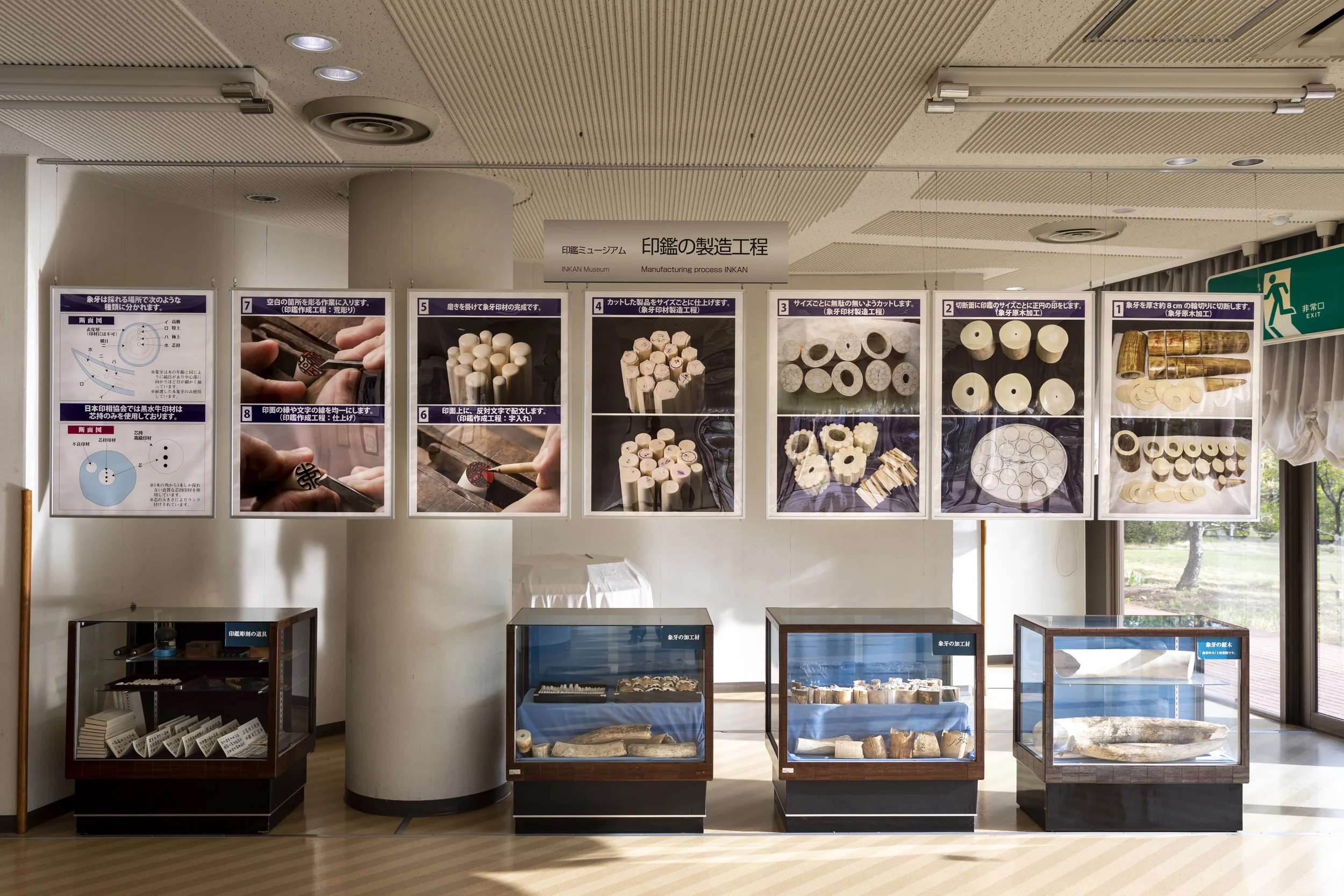
Yamanashi, Japan, April 2018: The Museum of Ivory Carving is financed by one of Japans most successful Hanko manufacturing businessmen. The museum has certified ivory carvers for Hanko design as well as a large museum dedicated to the founders extensive ivory collection. The carvings are Japanese as well as Chinese. One of Japan’s biggest Hanko manufacturers. The founder was a jeweler as a young man, he realized jewelry was too expensive for most people; there was better opportunity in hankos. Began marketing them in the forties through newspaper advertising. He was the first to do this and he talked about Ivory having status in personal Hankos. Today his company makes half billion yen a year. The Ivory museum has ivory from both China and Japan, some of it a few centuries old to a huge recent piece completed twenty years ago. All of this was financed this with his hanko sales. (Photo by Brent Stirton/Verbatim by Getty Images.)
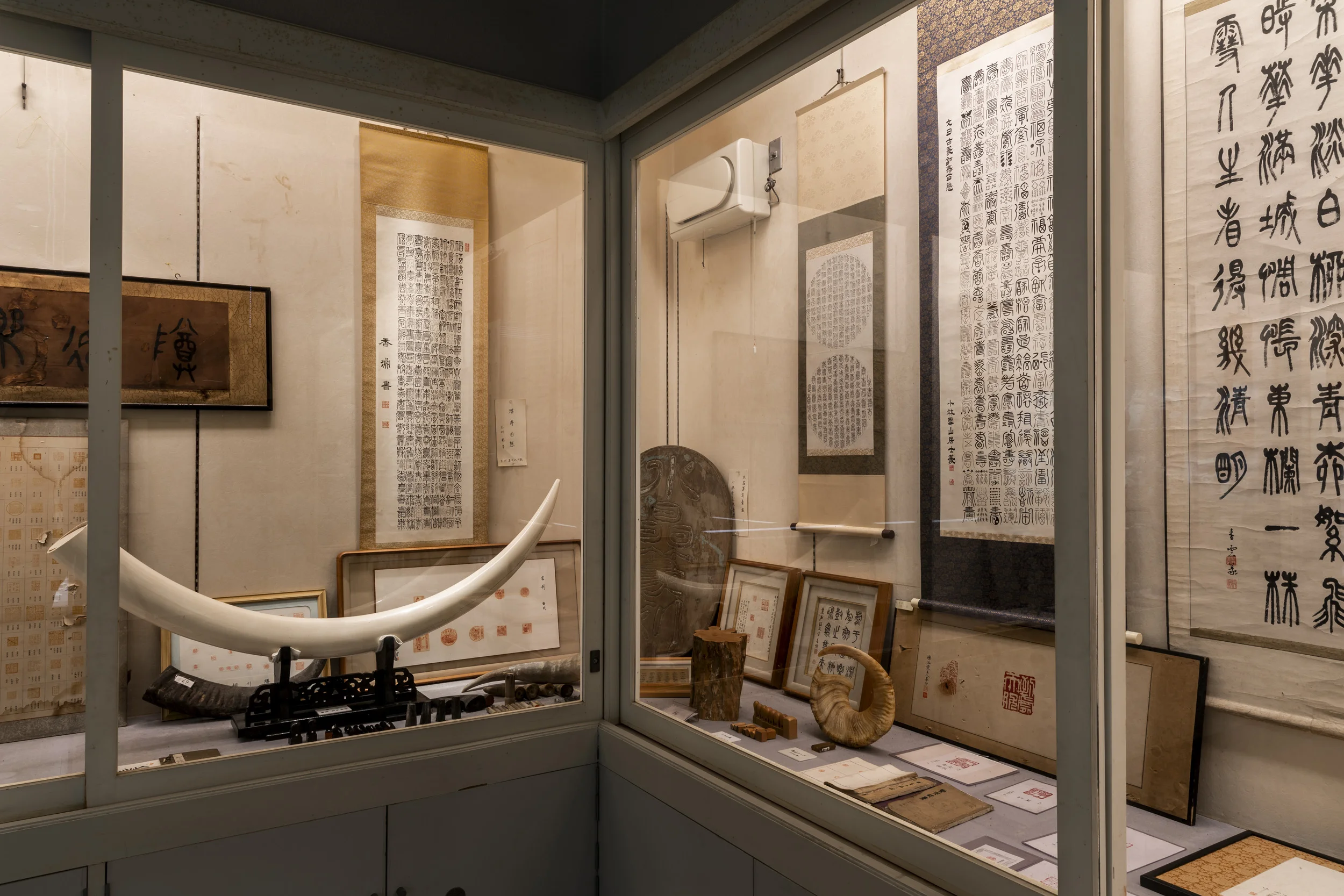
ROKUGO, YAMANASHI, JAPAN, APRIL 2018: The Rokugo Seal museum displays tools and materials from the early Meiji period onwards used to create personal stamps and seals. These include ivory, horn, crystals and tusks. (Photo by Brent Stirton/Verbatim by Getty Images.)

Yamanashi, Japan, April 2018: The Museum of Ivory Carving is financed by one of Japans most successful Hanko manufacturing businessmen. The museum has certified ivory carvers for Hanko design as well as a large museum dedicated to the founders extensive ivory collection. The carvings are Japanese as well as Chinese. One of Japan’s biggest Hanko manufacturers. The founder was a jeweler as a young man, he realized jewelry was too expensive for most people; there was better opportunity in hankos. Began marketing them in the forties through newspaper advertising. He was the first to do this and he talked about Ivory having status in personal Hankos. Today his company makes half billion yen a year. The Ivory museum has ivory from both China and Japan, some of it a few centuries old to a huge recent piece completed twenty years ago. All of this was financed this with his hanko sales. (Photo by Brent Stirton/Verbatim by Getty Images.)
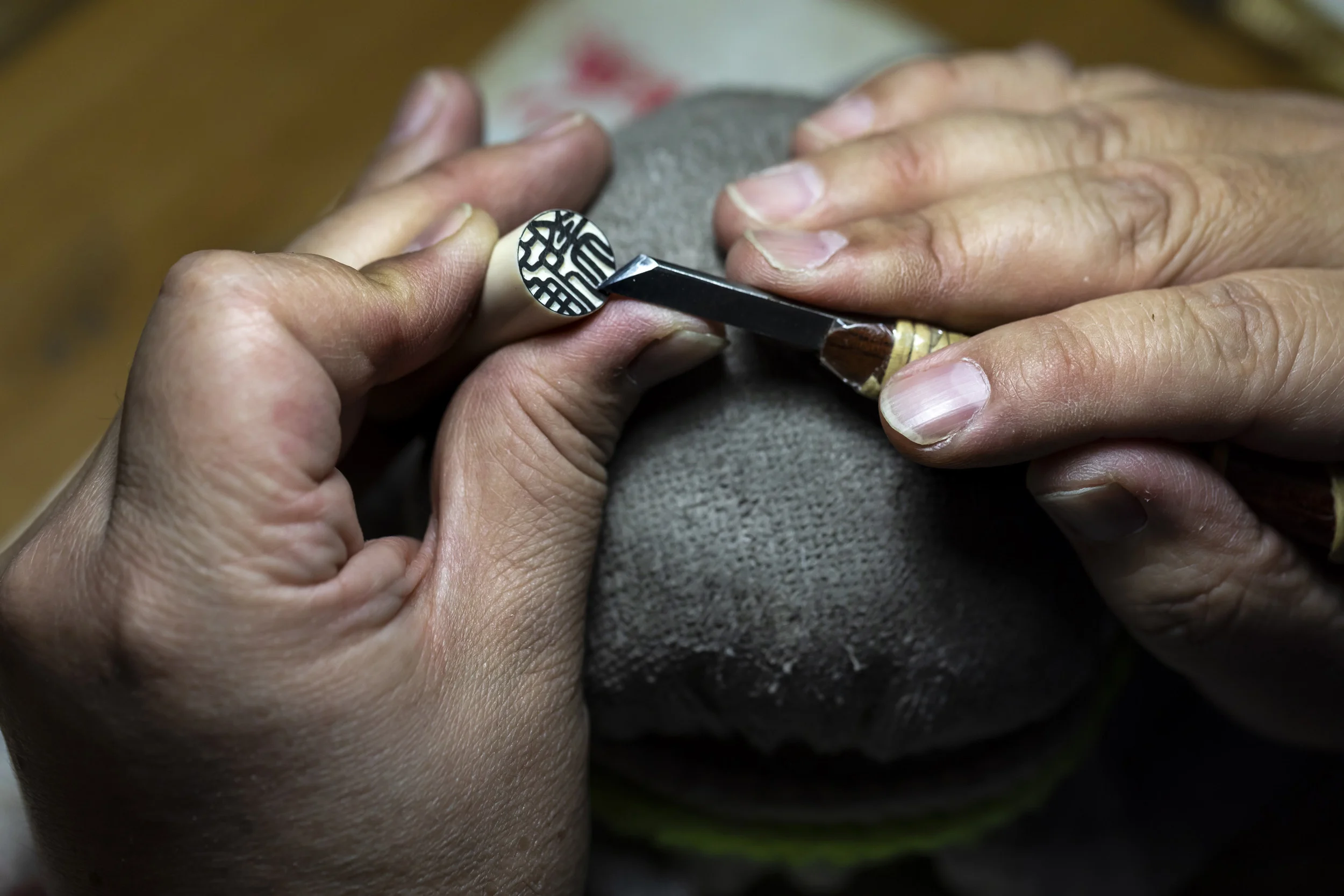
Yamanashi, Japan, April 2018: The Museum of Ivory Carving is financed by one of Japans most successful Hanko manufacturing businessmen. The museum has certified ivory carvers for Hanko design as well as a large museum dedicated to the founders extensive ivory collection. The carvings are Japanese as well as Chinese. One of Japan’s biggest Hanko manufacturers. The founder was a jeweler as a young man, he realized jewelry was too expensive for most people; there was better opportunity in hankos. Began marketing them in the forties through newspaper advertising. He was the first to do this and he talked about Ivory having status in personal Hankos. Today his company makes half billion yen a year. The Ivory museum has ivory from both China and Japan, some of it a few centuries old to a huge recent piece completed twenty years ago. All of this was financed this with his hanko sales. (Photo by Brent Stirton/Verbatim by Getty Images.)
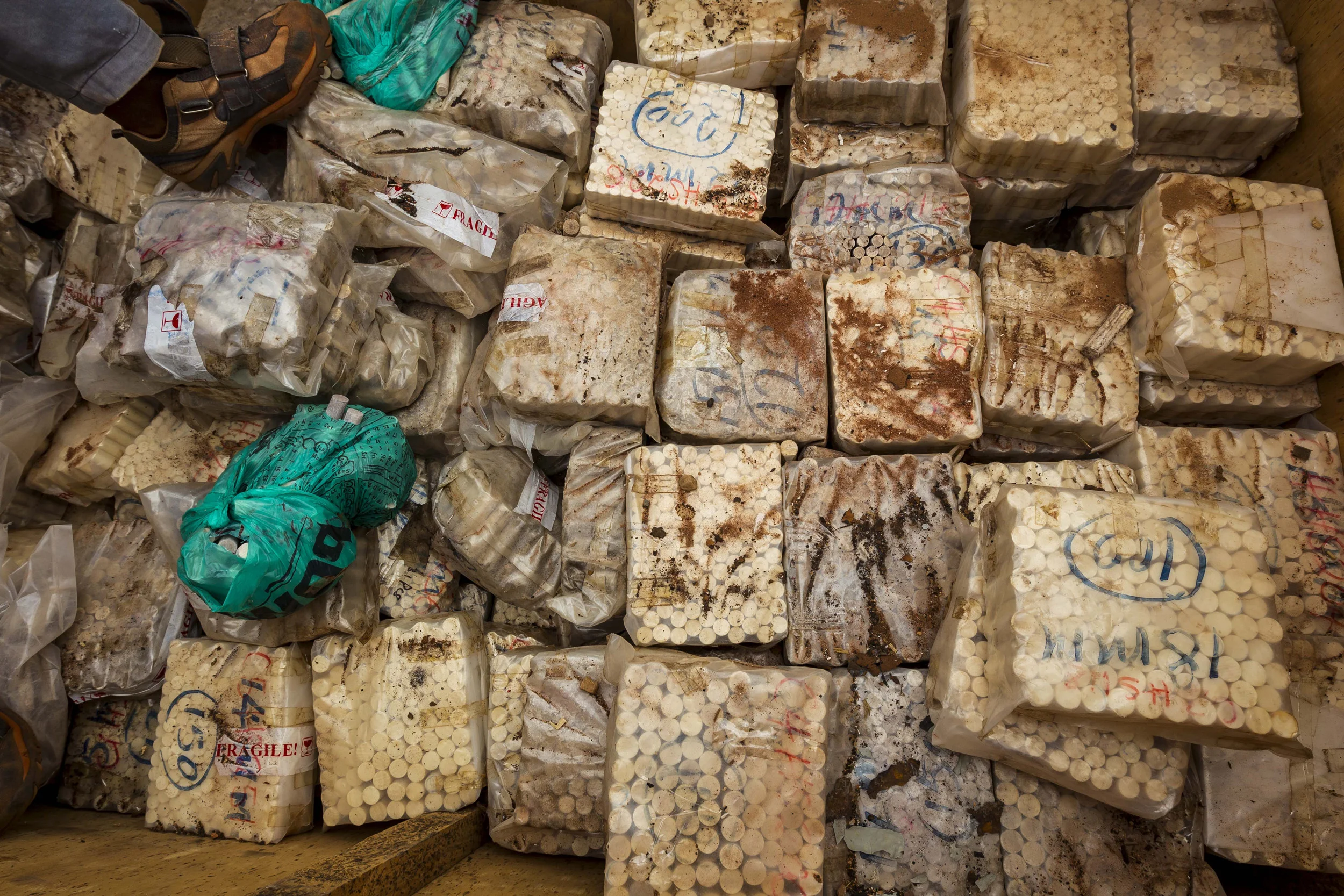
MANYANI, TSAVO, KENYA, JULY 2011: The preparation for the burning of 5 tons of trafficked Ivory recovered from a seizure in Singapore in 2002, Manyani, Tsavo, Kenya, 20 July 2011. The ivory to be burnt is originally from Malawi and Zambia, 5 tons of the original 6.4 tons were burnt and the remainder will supposedly be sent back to the 2 countries of origin, Malawi and Zambia. It will be burnt in Kenya under the auspices of the LATF, the Lusaka Task Force, a group of affiliated countries who are supposed to form a common front against wildlife crime in Africa. The ivory burning is regarded with some cynicism from conservation quarters, no Kenyan ivory was added to the pyre, despite stocks in excess of 65 tons and their appropriation of the PR value of this event. The Kenyans response is to say that the disposal of public assets is a parlimentary affair, with due process of the law. The minimum time it would take for this is 3 months, more than enough time for Kenya to have participated if it so chose. Wildlife crime in Kenya still remains a perceived minor crime, with a maximum fine of only $430 for the killing of an elephant for its tusks. In conservation circles this illustrates a lack of comittment on the part of the KWS to truly stamp out the illegal ivory trade within Kenya. The overwhelming perception is that KWS appropriated this event, with minimum participation from the other LATF countries, and no credit was given to the Environmental Impact Agency despite the fact that it was their intelligence operation which resulted in the seizure in the first place. KWS also attempted to charge all foreign media a fee of $700 to attend the burn, despite them being invited guests to the burning and an indispensable source of publicity for Kenya's supposed anti-ivory trade stance. (Photo by Brent Stirton/Reportage for National Geographic.)

Tokyo, Japan, April 2018: A netsuke carver carves an ivory piece in his small studio inside his apartment in Tokyo. He says he makes about one of these pieces every month to 6 weeks. The pieces are often comissioned by clients looking for something to commemorate a special occasion. This carver says he is aware that there is an ivory problem in the world and he is exploring the use of plastics and box wood in order to find a replacement. He says that is difficult because of the unique qualities and colors of ivory and its value to collectors. If the ivory markets dries up in Japan, he may not be able to make enough money for his family. (Photo by Brent Stirton/Verbatim by Getty Images.)

Tokyo, Japan, images of a private ivory Netsuke collection. Many of these exquisitely carved pieces are defined as a carved miniature ornament, especially of ivory or wood, formerly worn in Japan to suspend articles from the sash of a kimono. The idea is that they be used subtly on a garment, sometime to hold a key bag but mainly to ornament something on the clothing or something worn in the belt tying the Kimono. Subtle games are played in Japanese society with the theme of these tiny ornaments. (Photo by Brent Stirton/Verbatim by Getty Images.)

KYOTO, JAPAN, APRIL 2018: The director of The Netsuke Art Museum, Kyoto, Mr Muneaki Kinoshita, is seen in the garden with an ivory netsuke carving in his belt which he uses to hold his key bag, this is a modern twist on how Netsuke would once have been used in Kimono belts to anchor similar bags and acoutremounts. (Photo by Brent Stirton/Verbatim by Getty Images.)

KYOTO, JAPAN, APRIL 2018: The director of The Netsuke Art Museum, Kyoto, Mr Muneaki Kinoshita, is seen in the garden with an ivory netsuke carving in his belt which he uses to hold his key bag, this is a modern twist on how Netsuke would once have been used in Kimono belts to anchor similar bags and acoutremounts. (Photo by Brent Stirton/Verbatim by Getty Images.)

Tokyo, Japan, 13 January 2018: Part of a private Japanese collectors’ ivory collection, stored on a shelf in his office and dating back to the early 20th century. (Photo by Brent Stirton/Verbatim by Getty Images.)
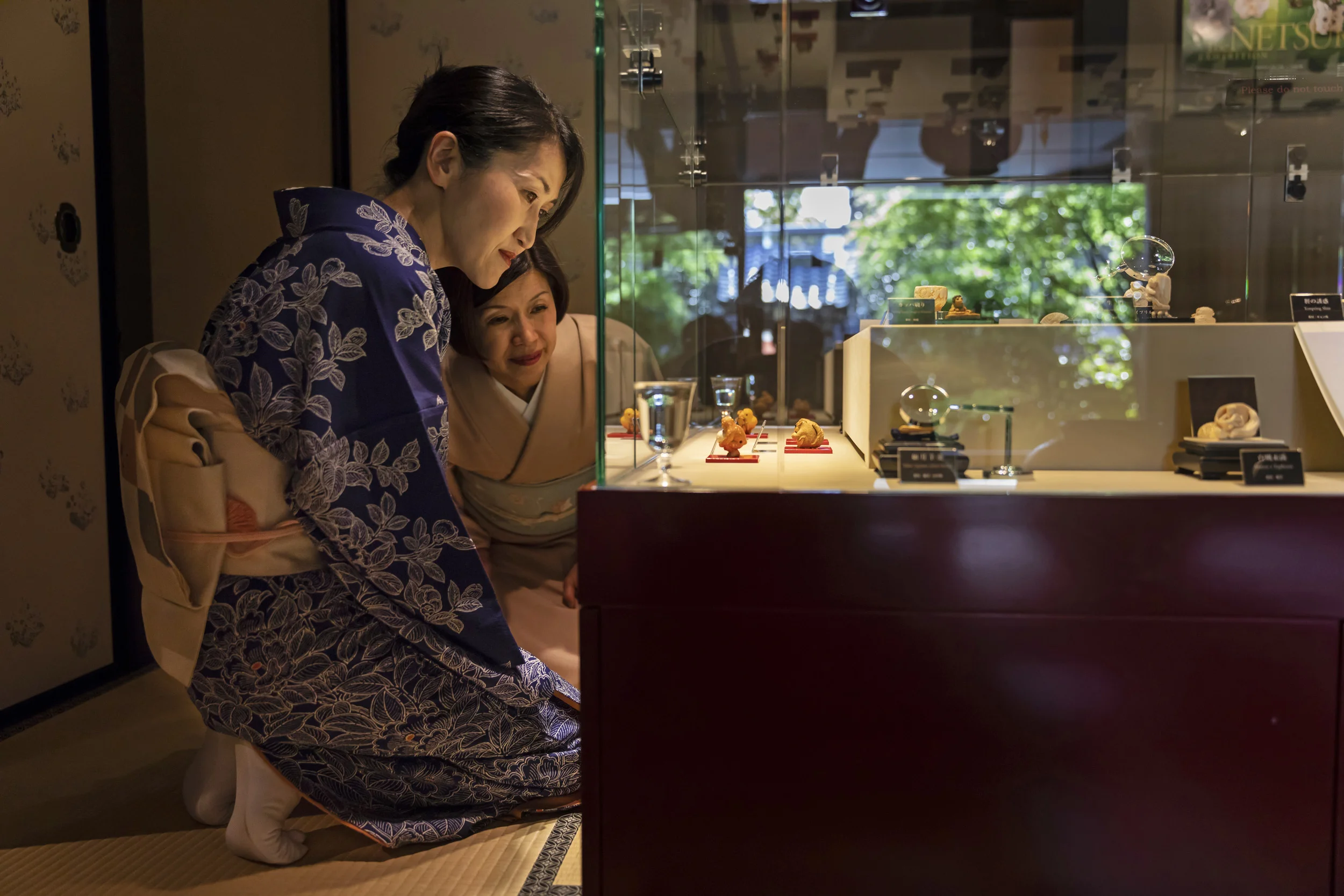
KYOTO, JAPAN, APRIL 2018: Two local Kyoto woman dressed in traditional kimono visit The Netsuke Art Museum, Kyoto. The majority of the high end carvings at the museum are made of ivory, both recent and older carvings. (Photo by Brent Stirton/Verbatim by Getty Images.)

KYOTO, JAPAN, APRIL 2018: Two local Kyoto woman dressed in traditional kimono visit The Netsuke Art Museum, Kyoto. The majority of the high end carvings at the museum are made of ivory, both recent and older carvings. (Photo by Brent Stirton/Verbatim by Getty Images.)
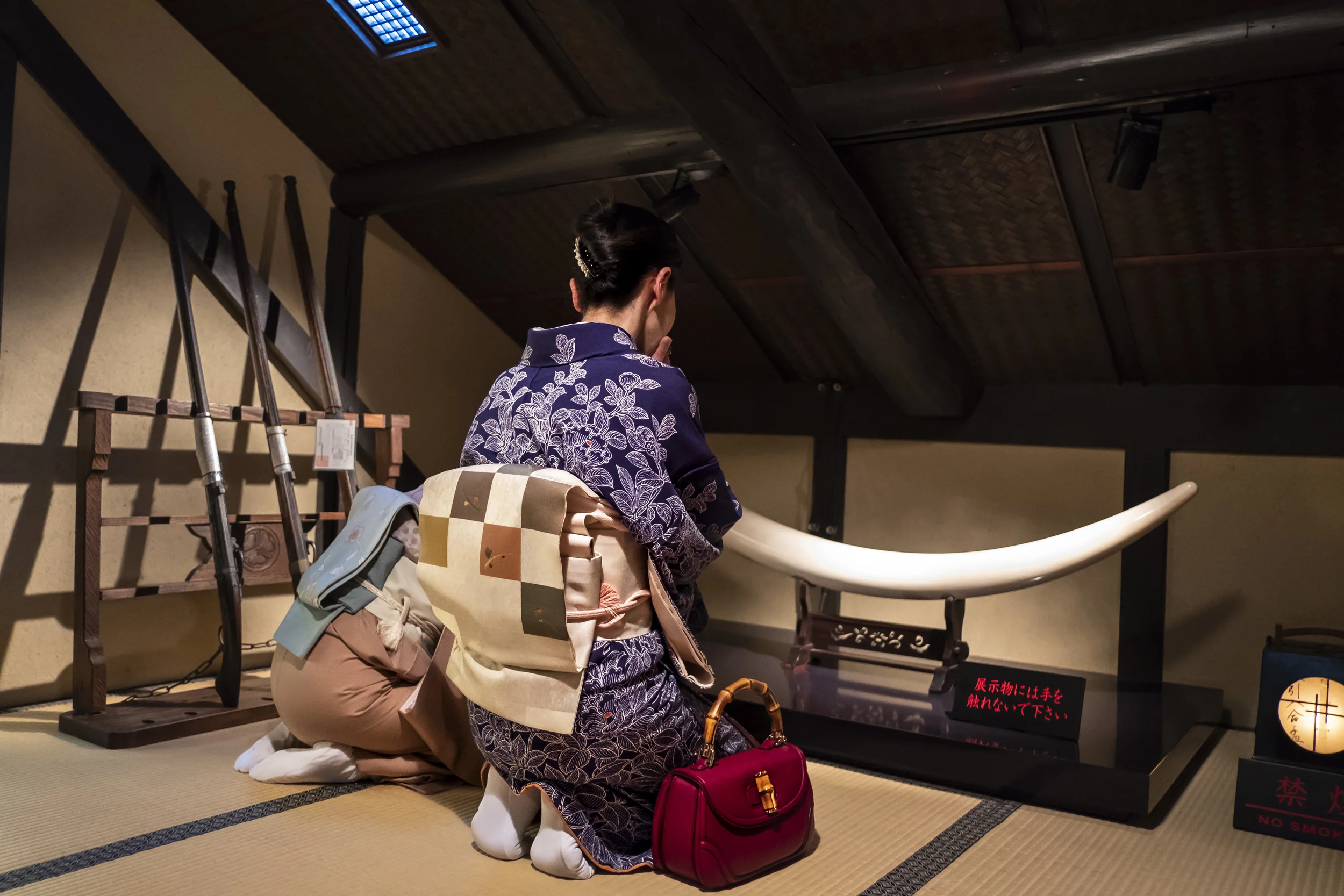
KYOTO, JAPAN, APRIL 2018: Two local Kyoto woman dressed in traditional kimono visit The Netsuke Art Museum, Kyoto. The majority of the high end carvings at the museum are made of ivory, both recent and older carvings. (Photo by Brent Stirton/Verbatim by Getty Images.)

AMBOSELI, KENYA, MAY 2011: Undercover Kenya Wildlife Services Ranger detusk a bull elephant killed by a spear in the Amboseli ecosystem in the shadow of Amboseli, Kenya, May 29, 2011. The elephant was killed by a single spear stroke close to the spine which penetrated deeply enough to cause massive internal bleeding. It is not known whether this was a poaching attempt or whether this was a case of human elephant conflict with the animal in the crops of local Masaai. The animal was detusked and the ivory sent to the KWS HQ in Amboseli National Park. KWS has the mandate to protect wildlife in Kenya but lack the manpower and resources. Organisations like Big Life are the private sector arm of KWS in the 2 million acre Amboseli ecosystem, working alongside them to supply manpower, vehicles, funding, information networks and aircraft to practise effective conservation in the region. (Photo by Brent Stirton/Reportage for National Geographic Magazine.)

Yamanashi, Japan, April 2018: The Museum of Ivory Carving is financed by one of Japans most successful Hanko manufacturing businessmen. The museum has certified ivory carvers for Hanko design as well as a large museum dedicated to the founders extensive ivory collection. The carvings are Japanese as well as Chinese. One of Japan’s biggest Hanko manufacturers. The founder was a jeweler as a young man, he realized jewelry was too expensive for most people; there was better opportunity in hankos. Began marketing them in the forties through newspaper advertising. He was the first to do this and he talked about Ivory having status in personal Hankos. Today his company makes half billion yen a year. The Ivory museum has ivory from both China and Japan, some of it a few centuries old to a huge recent piece completed twenty years ago. All of this was financed this with his hanko sales. (Photo by Brent Stirton/Verbatim by Getty Images.)

Yamanashi, Japan, April 2018: The Museum of Ivory Carving is financed by one of Japans most successful Hanko manufacturing businessmen. The museum has certified ivory carvers for Hanko design as well as a large museum dedicated to the founders extensive ivory collection. The carvings are Japanese as well as Chinese. One of Japan’s biggest Hanko manufacturers. The founder was a jeweler as a young man, he realized jewelry was too expensive for most people; there was better opportunity in hankos. Began marketing them in the forties through newspaper advertising. He was the first to do this and he talked about Ivory having status in personal Hankos. Today his company makes half billion yen a year. The Ivory museum has ivory from both China and Japan, some of it a few centuries old to a huge recent piece completed twenty years ago. All of this was financed this with his hanko sales. (Photo by Brent Stirton/Verbatim by Getty Images.)

Yamanashi, Japan, April 2018: The Museum of Ivory Carving is financed by one of Japans most successful Hanko manufacturing businessmen. The museum has certified ivory carvers for Hanko design as well as a large museum dedicated to the founders extensive ivory collection. The carvings are Japanese as well as Chinese. One of Japan’s biggest Hanko manufacturers. The founder was a jeweler as a young man, he realized jewelry was too expensive for most people; there was better opportunity in hankos. Began marketing them in the forties through newspaper advertising. He was the first to do this and he talked about Ivory having status in personal Hankos. Today his company makes half billion yen a year. The Ivory museum has ivory from both China and Japan, some of it a few centuries old to a huge recent piece completed twenty years ago. All of this was financed this with his hanko sales. (Photo by Brent Stirton/Verbatim by Getty Images.)
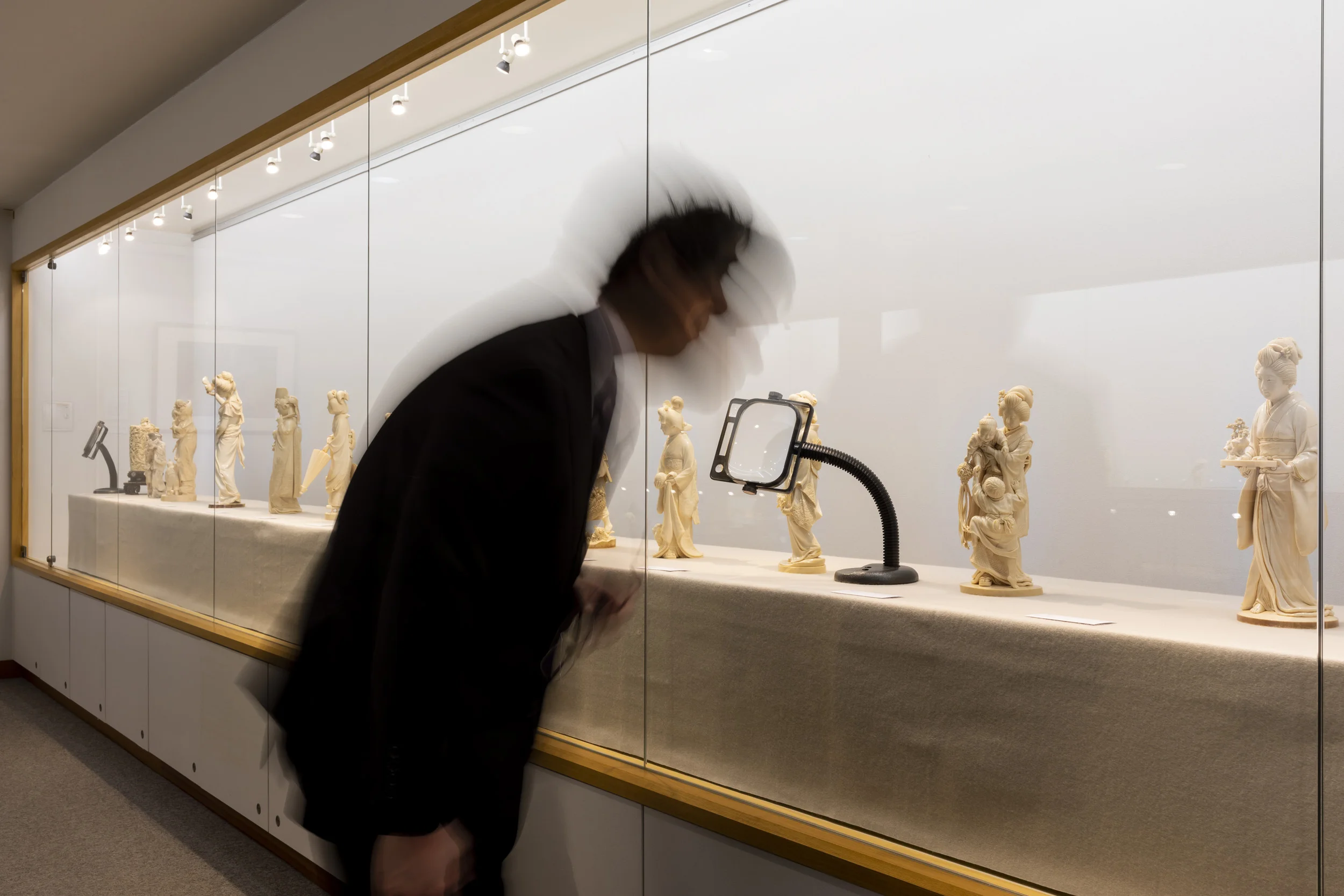
Kyoto, Japan, 19 April 2018: One of the most high end collections of ivory in Japan collection is seen at the Kiyomizu Samenzaka ivory museum in Kyoto. (Photo by Brent Stirton/Verbatim by Getty Images.)

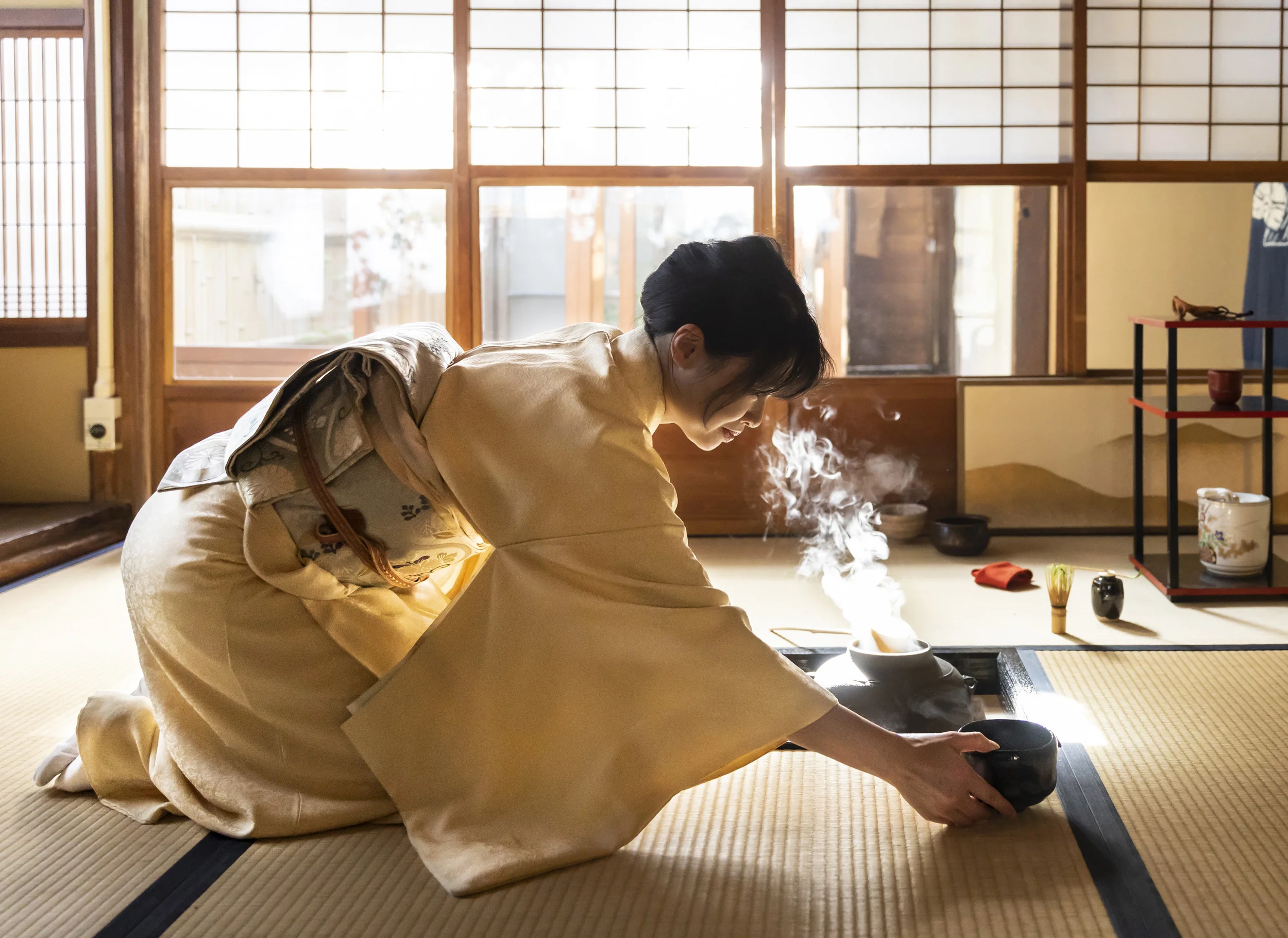
KYOTO, JAPAN, 19 April 2018: A tea ceremony perfomed in a private house in Koto, Kyoto. Teapot lids and tea container lids are often made of ivory in Japan as part of high end utensils. (Brent Stirton/Verbatim for Getty Images.)

Tokyo Japan, April 2018: Reiko Nakamura has been studying ivory carving for 12 years. She is passionate about it. She received a tusk from her uncle 12 years ago and cut that up to make the material for her carvings. She first noticed ivory in antique markets and from there she began to be interested in carving herself. She attends classes with a master ivory carver in order to grow in her craft. She became aware of these classes when she saw them advertised in the newspaper. (Photo by Brent Stirton/Verbatim by Getty Images.)

TOKYO, JAPAN, April 2018: One of the few Ivory protest posters on display on Earth Day in a park in Tokyo. This one was put out by the Japanese Elephant and Tiger Fund, who say that a softer approach works better with the Japanese public.(Photo by Brent Stirton/Verbatim by Getty Images.)

Tokyo, Japan, April 20th 2018: Illegal ivory for sale on Yahoo Japan’s retail site. Yahoo have refused to shut down this sales site despite repeated evidence of illegal ivory sales. In this image, a whole carved tusk is displayed. Japanese law clearly states that if the tip of the tusk is present and the overall length is over 20cm, then it has to be registered. There is no certificate of registration for this tusk on the sales page, despite the length being 43cm and the tip being clearly present. This is apparently common practise in Japan on online retails sites.Customs searches for ivory have also been deprioritized as ports are deemed too busy to worry about it and it may interfere in commerce. (Photo by Brent Stirton/Verbatim for Getty Images.)
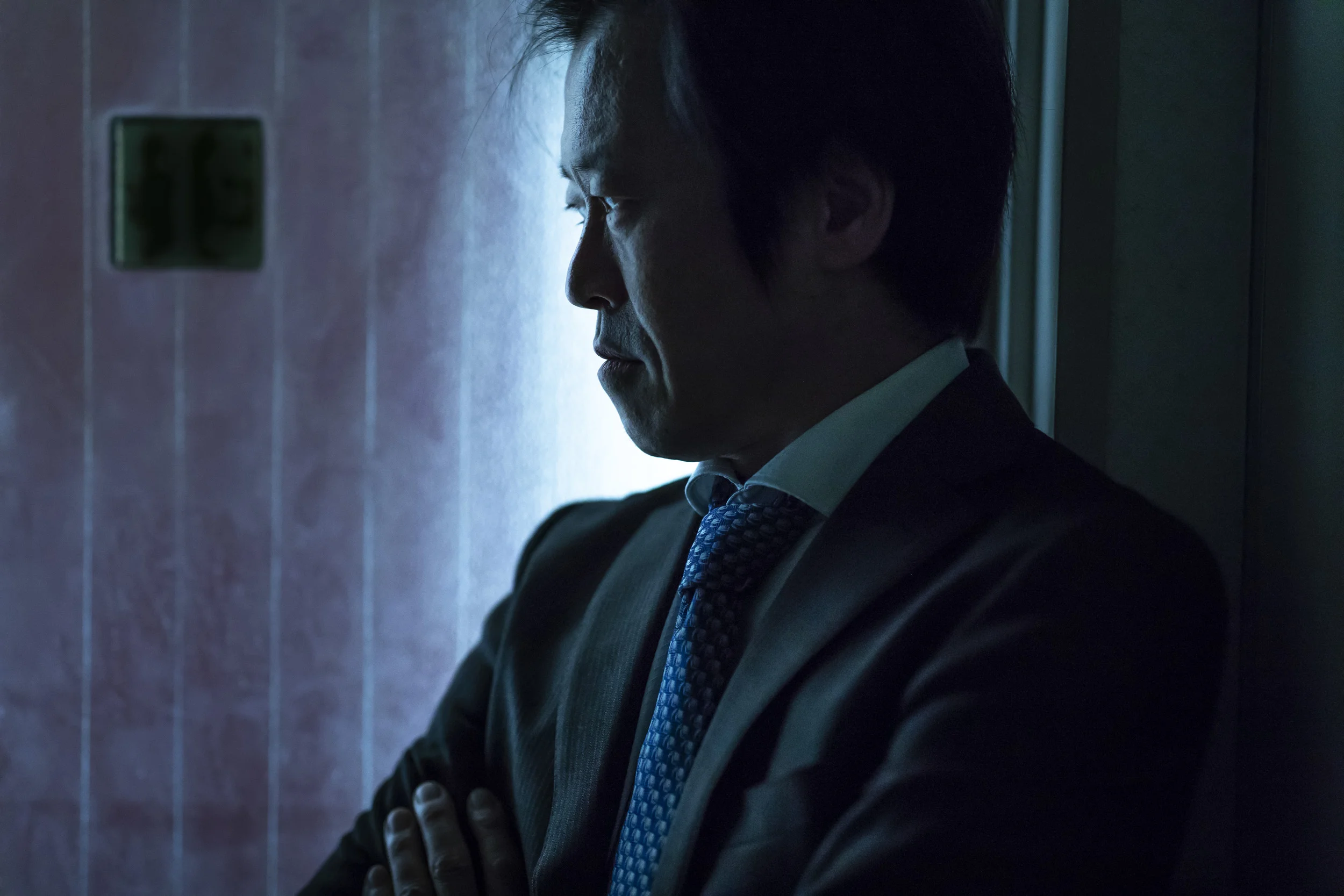
Tokyo, Japan, 26 April 2018: Masayuki Sakamoto, executive director of the Japanese Tiger and Elephant Fund, and lawyer. He is seen on a day when a long term investigation into illegal ivory has failed. The illegal ivory trade in Japan is conducted largely online with unregistered tusks and carvings. As China has agreed to end their domestic ivory trade, Japan has refused to. More tusks have also come into the Japanese market in recent years, many of them unregistered. Loopholes in Japanese law also mean that if cut tusks come into Japan, once they get past customs in some of the busiest ports in the world, they are considered legal. Sakamoto considers the international mail service to be the most virulent element of the illegal ivory trade. He also points to online retails sites like Yahoo japan who have refused to shut down their ivory sales division. Once on the Yahoo site, it took less than 2 minues to find unregistered and therefore illegal ivory for sale. (Photo by Brent Stirton/Verbatim for Getty Images.)

Tokyo, Japan, April 2018: A special day of Blessings for Elephants conducted by members of the Japanese Ivory Association at the Gokokuji temple in Tokyo. This is seen by the members as paying homage to the elephant’s who’s ivory is the heart of their business. (Photo by Brent Stirton/Verbatim by Getty Images.)

AMBOSELI, KENYA, MAY 2011: Undercover Kenya Wildlife Services Ranger detusk a bull elephant killed by a spear in the Amboseli ecosystem in the shadow of Amboseli, Kenya, May 29, 2011. The elephant was killed by a single spear stroke close to the spine which penetrated deeply enough to cause massive internal bleeding. It is not known whether this was a poaching attempt or whether this was a case of human elephant conflict with the animal in the crops of local Masaai. The animal was detusked and the ivory sent to the KWS HQ in Amboseli National Park. KWS has the mandate to protect wildlife in Kenya but lack the manpower and resources. Organisations like Big Life are the private sector arm of KWS in the 2 million acre Amboseli ecosystem, working alongside them to supply manpower, vehicles, funding, information networks and aircraft to practise effective conservation in the region. (Photo by Brent Stirton/Reportage for National Geographic Magazine.)
